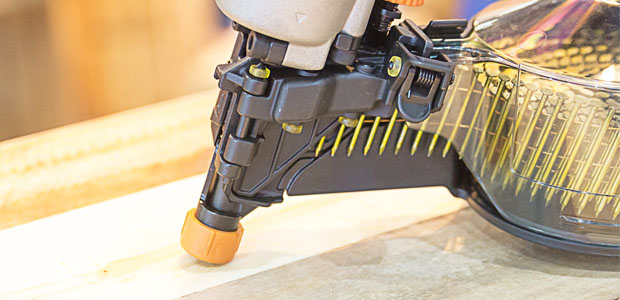
NIOSH Criticizes ANSI Nail Gun Standard
The agency has given feedback on how to improve the consensus standard
A recent commentary published by NIOSH and written by John Howard, MD; Christine M. Branche, PhD, FACE; and Scott Earnest, PhD, PE, CSP, discusses the prevalence of the nail gun injury problem, as well as ways to prevent it through trigger design and the failings of the ANSI procedures for developing consensus standards.
According to the report, unintended nail discharge is the cause of two-thirds of workers compensation claims for nail gun injuries. From 2006 to 2011, approximately 14,000 worker and 11,000 consumer nail gun injuries per year required emergency medical treatment. Most of the injuries are puncture wounds to hands and fingers.
A sequential trigger was developed over 40 years ago to try and prevent these injuries by requiring the nail gun to be pressed against the surface that will receive the nail before the user can activate the trigger and release the nail. Not all nail guns adhere to this process, however. Contact triggers only require the user to pull the trigger, increasing the risk of double firing and accidental discharge.
According to NIOSH, ANSI’s inability to reach a consensus that requires all construction operations use sequential triggers needs to be reformed. According to the report, “a trade association developed standards using an informal canvass method instead of the formal committee method,” which would allow for more face-to-face interaction.
“These procedural and substantive deficiencies associated with ANSI 2015 nail gun standard detract from its utility for government stand-setting purposes,” says the report.